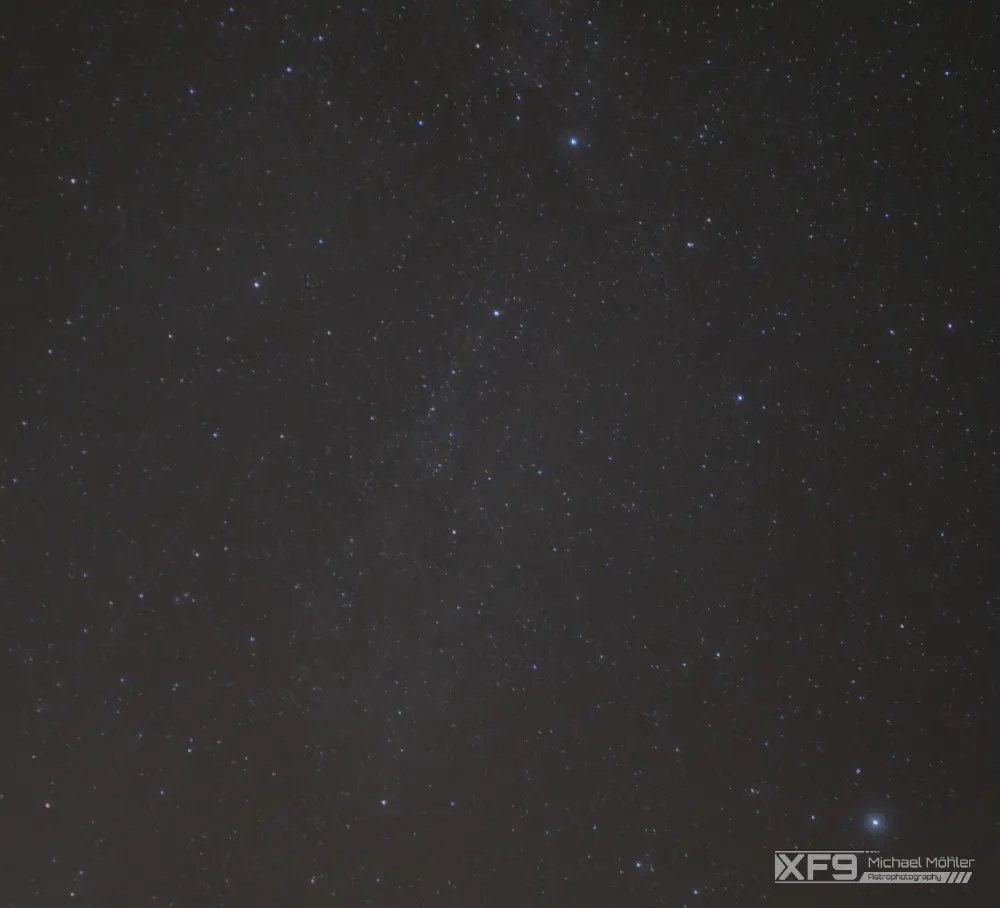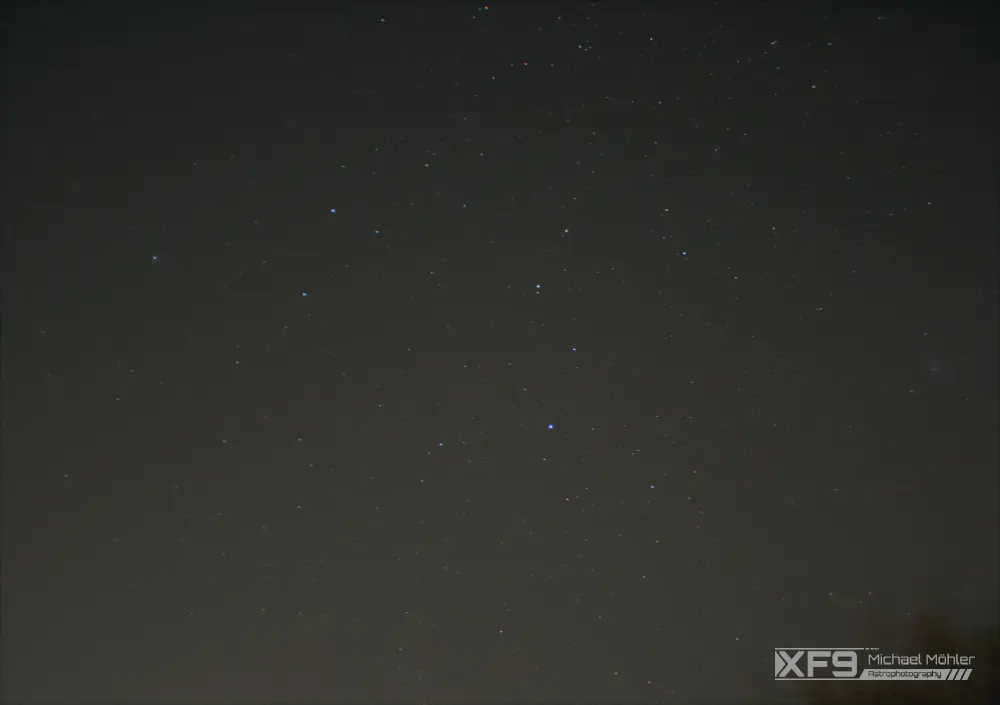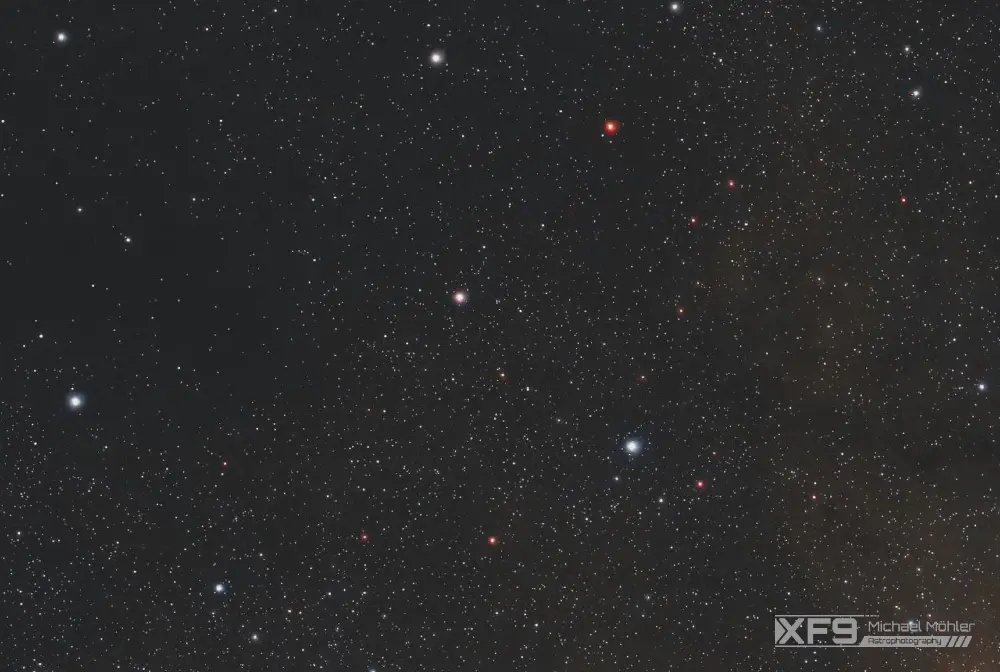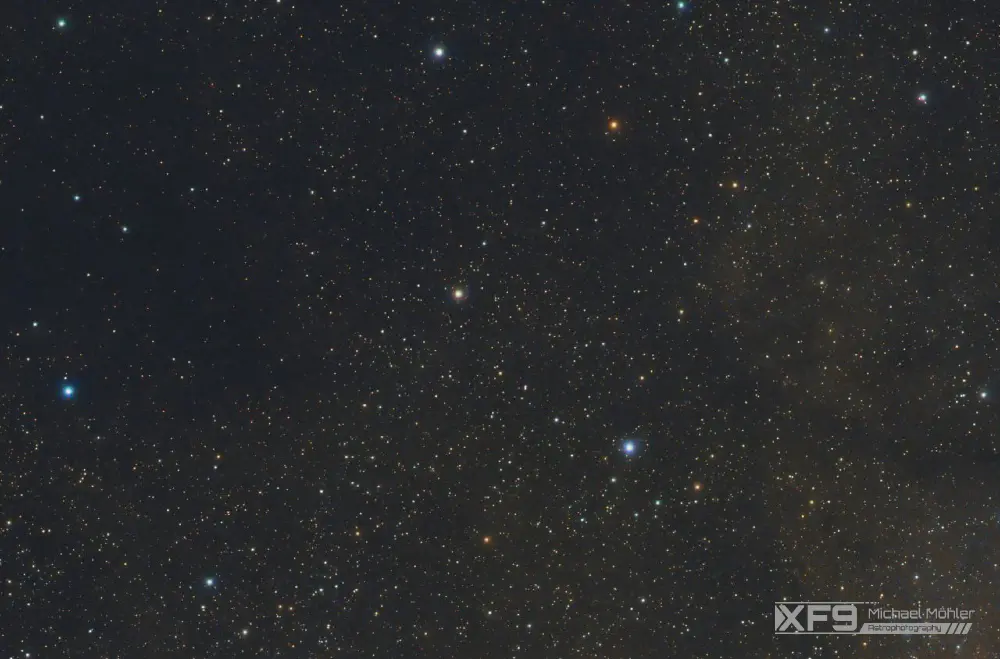Why to photograph stars
Most astrophotographers only ever go for brightly colored nebula and stunning galaxies because these are real eyecatchers. But there are great things to discover besides these two, and sometimes it’s even necessary to photograph stars separately from the nebula you want to image.
Also, if you are a beginner or interested in trying astrophotography, photographing constellations is an easy and yet rewarding way to start the hobby.
What to photograph
There are different types of target available and in the following I’ll briefly discuss each of them.
Constellations
As mentioned before, taking pictures constellations is a good way to start into the hobby. Because they are so gigantic you don’t need any specialized gear - just your regular DLSR (or even just your phone!) and a tripod. Some accessories like a shutter release cable, a dew heater band and an app to locate the constellations makes live easier but are by no means required.
As a fact, this is how I started astrophotography:
These two are one of the earliest photographs I have taken, just to learn the basics and figure out if I like being out in the dark, shooting stars.
The process of taking pictures of constellations isn’t that hard to begin with. Basically you just set up your tripod and camera and start shooting… well it’s not that easy because you need to dial in a few things, but it’s not complicated. I could write down a list of things I did, but Nebula Photos on YouTube has some very good, very detailed, guides on how to do this:
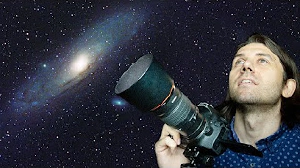
Star cluster
If you want to go deeper, there are spots in the night sky where stars are really dense: star clusters. These come in two flavours: open and globular clusters. While open star cluster are just “many stars in one place”, globular clusters are really dense, like M13, a globular cluster in the constellation of hercules:
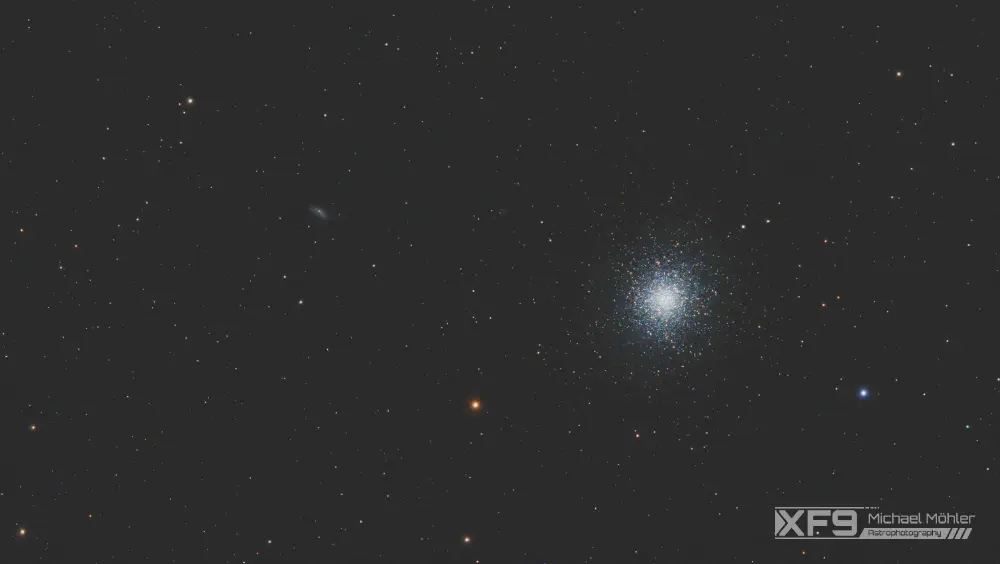
Star fields
Star fields are the “boring” siblings of star clusters. They don’t feature a dense array of stars and are not wide enough to feature full constellations. These usually feature the milky way in some form.
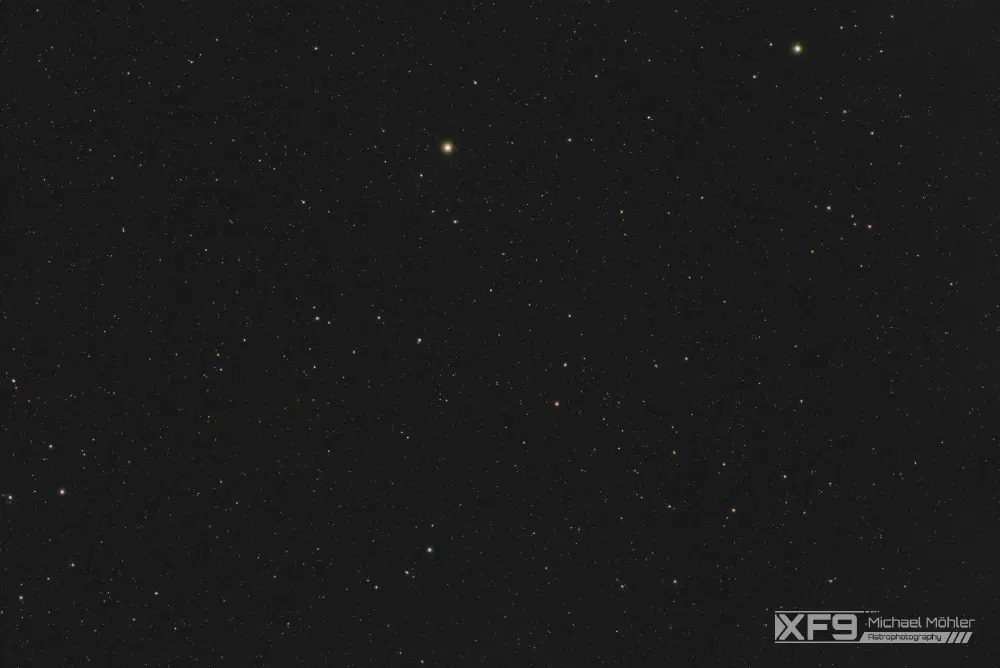
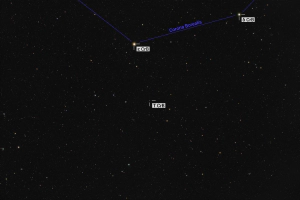
Recently I took this image to photograph T CrB. It is next to the constellation Coronae Borealis (see the annotated version to the left). While stars itself are not that spectacular, T CrB is a bit special. It is a recurring nova, meaning it will “blow up” periodically. It is expected to erupt within the next few months so I took this before shot and, hopefully, can take an after shot. It is expected to reach its maximum brightness for just half a day so cross your fingers it will be in the afternoon and the night will be clear …
RGB Stars
The purpose if these images is a bit differently from the ones we discussed so far. Sometime, when shooting nebulae, we will use specialised filter, so we can extract certain emission lines. For example, I most recently got hold of a DNB (duo narrowband) filter, which will remove everything but light usually emitted from hydrogen alpha and oxygen. This causes the stars to have a very strange color as most of its natural color is blocked. In order to have nice looking stars I’m going to shoot the stars separately and merge both images in post-processing:
How to take photographs of stars
When photographing nebula we want to invest as much time as possible. Usually in the range from 6 to over 60 hours of total integration time. This is due to the fact that nebulae are really faint almost passing as noise from the camera sensor. So you need a tremendous amount of integration time to separate the nebula from the noise.
Stars on the other hand are quite bright and thus don’t require much integration time. The image of M13 above are roughly 15 minutes of total integration time. Because they are so bright we also need to drastically cut down on exposure time for the single frames. I usually shoot 5-Minute exposures for nebula, but for the image above I used 30-Second exposures and that still was too long as the core of some stars are overexposed. Also, you want to lower your ISO or Gain, depending on the Camera you use.
I can’t give you specific numbers for your camera, so I would suggest to just try it out. Make a list of targets and settings you want to try and go for it. Afterward stack the images and look at the center of the stars. If they are fully saturated (completely white) you are exposing too long or your ISO/Gain is too high.

